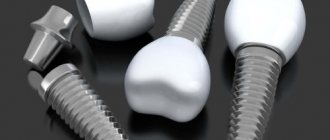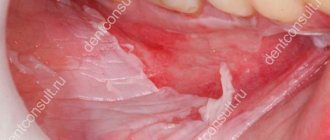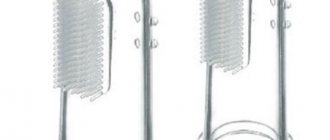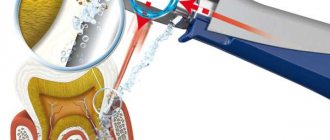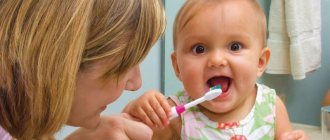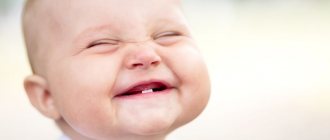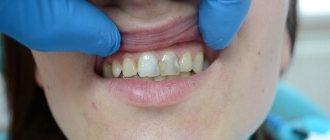Why should you brush your baby teeth?
Many young mothers believe that brushing their baby teeth is not necessary because they will fall out anyway. However, decaying teeth
are always pain, discomfort and a source of spread of pathogenic bacteria.
How to brush your teeth correctly
How often, what to use, and in what mode is it better to brush your teeth? Detailed instructions for children and adults.
In addition, the early habit of brushing teeth becomes natural for the child and will help him preserve the health of his molars.
Treatment of baby teeth in our clinic
To check the condition of your baby’s teeth and treat identified diseases, we invite you to the KANO dental clinic. Experienced doctors work here who know how to find an approach to any small patient. They master modern methods of combating complications in both baby teeth and permanent teeth that do not have formed roots. Taking into account the clinical situation, as well as the age of the child, treatment in one or several visits is possible. Our kids don’t cry, because they are not scared or in pain, but are very interested.
To make an appointment with a pediatric dentist, just call 401, or leave a request here.
How are the first teeth cut?
Teaching your child the rules of personal hygiene
Children are taught hygiene procedures from the first days of life. Find out how to teach your child to practice personal hygiene on his own.
The main symptoms of teething in infants are increased salivation and swelling of the gums.
The process is usually uncomfortable for the child and may be accompanied by increased moodiness and crying for no reason, insomnia and loss of appetite. A slight increase in temperature
(up to 38°C) may be a natural protective reaction of the body, but in this case the child should be shown to a doctor.
You can help the baby a little. Buy several teethers
- rubber or plastic toys for the child to bite on.
Chewing rings with liquid inside, which are first placed in the refrigerator to cool, has a particularly soothing effect. Additional methods
: Gently massage the baby's gums with a gauze pad soaked in cold water, or use baby teething gels with anesthetics, which the pediatrician will recommend.
How to start taking care of your newborn's oral health?
The first treatments should focus on your child's gums and oral mucosa. This procedure is simple and does not require the use of special products. To do this, use warm boiled water and a sterile gauze pad. It is important that the water is not too hot. Wash your hands thoroughly, wrap your finger in a napkin moistened with water, and gently rinse your gums, tongue and cheeks from food debris.
We repeat this procedure every time we feed the baby. Even if your baby only drinks milk, leaving the mouth open after feeding can cause white deposits and bacteria growth. Failure to regularly clean the mouth in infants often leads to thrush. They are caused by yeasts.
Mold is small white spots that appear on the tongue and on the inside of the cheeks. Infection occurs due to poor oral hygiene or a poorly cleaned bottle nipple. Breastfeeding mothers should rinse their nipples with warm water before and after breastfeeding. The infection is not serious, but it causes discomfort, which may cause your baby to be fussy and anxious. This is why oral care is so important from the first days of a child’s life.
What foods are good for your first teeth?
Foods rich in calcium
.
First of all, it is cottage cheese and hard cheese. Slightly less calcium is found in milk, fermented milk products, green leafy vegetables, gooseberries, currants, and cherries. Sources of vitamin D, without which calcium cannot be absorbed, are egg yolk and butter. You should include carbohydrate foods in your child’s diet less often: bread, potatoes, and especially sugar and sweet foods. Sweets provoke the active proliferation of bacteria in the mouth, which leads to early caries
. “The longer you don’t offer your child sweets, the better,” says Kuznetsova, “for example, children under three years old should not be given chocolate at all.”
How does caries occur?
The main causes of caries are improper oral care combined with poor diet. During the day, a plaque consisting of food debris and particles of saliva forms on the surface of the enamel. A particular danger to enamel is lactic acid, which is formed from sugars under the influence of microbes that inhabit the oral cavity.
Another cause of caries is the formation of a malocclusion. What can disrupt the formation of bite? At the age of 2 to 6 years, the following reasons are important: defective posture, mouth breathing, chewing and swallowing with an open mouth, the predominance of soft foods in the diet that do not require active chewing, the child’s habit of holding food in his cheek for a long time.
How to care for baby teeth?
From the moment the first baby teeth appear (6-8 months)
, and up to a year, parents should brush the child’s teeth with a special silicone brush placed on a finger at least once a day.
From the age of one year,
a child can brush his teeth twice a day with a very soft children's toothbrush, moving from the gums to the cutting edge or chewing surface of the teeth.
From 2-2.5 years old,
children's gel toothpaste should be used.
The amount of paste per cleaning should not exceed the size of a pea. From the age of 3,
children's teeth are brushed twice a day with a very soft toothbrush and children's toothpaste.
From the age of 2-3 years
, a child can be taught to brush his teeth independently under the mandatory supervision of his parents.
Caries of baby teeth
Children's teeth have weakly mineralized enamel, especially immediately after eruption. Therefore, they are more vulnerable to decay-causing microorganisms than adult teeth. Decay in primary teeth is usually found in children aged 2-3 years, and in some cases it occurs in children under 2 years of age. Most often, caries affects the deciduous incisors of the upper jaw and the chewing surface of the molars. Particular attention in pediatric dentistry is paid to preventive methods that prevent the occurrence of caries.
Child's visit to the dentist
should occur in the first days after birth. In the future, it is recommended to visit the dentist 2 times a year if the child has no problems with his teeth. If so, then every 3 months. This is much more correct and profitable than treating advanced caries and its complications. During the visit, the doctor will carefully examine the child’s teeth and oral cavity, remove plaque and dental deposits. If there are small carious lesions, the doctor will heal them without waiting for complications. The hygienist will give recommendations on caring for the child’s teeth and oral cavity, and will tell you how to choose the right toothpaste and brush.
Peculiarity of childhood
consists in the rapid occurrence of life processes in the child’s body. Therefore, the development of pathological processes proceeds too quickly. Today you see healthy baby teeth in your child, and a month later you discover caries. The dentist will identify systemic disorders and, if necessary, prescribe the necessary vitamin and mineral complexes and medications. Fluoridation compounds for children's teeth effectively prevent the development of caries. Preventive examinations and professional teeth cleaning will not cause fear in the child and will contribute to a trusting relationship with the doctor. Early diagnosis will allow for simple, painless and inexpensive treatment.
How does caries occur in baby teeth?
A huge number of microorganisms live in the oral cavity. It is necessary to prevent their excessive growth, as this leads to the formation of plaque and then caries. Caries is tooth decay that begins with the dissolution of the mineral substances that make up the enamel. Self-cleaning of teeth is facilitated by saliva, which has bactericidal properties. But plaque still accumulates on hard-to-reach surfaces of teeth, in which bacteria “linger.” Like most children, bacteria have a sweet tooth. They feed on carbohydrates and produce acid, which destroys apatite crystals (tooth enamel is made up of them). These processes are asymptomatic, i.e. without pain. The enamel of baby teeth is very thin, which is why it becomes easy prey for bacteria, which then reach the dentin, the main tissue of the tooth. Dentin is much softer than enamel and therefore deteriorates faster than enamel. Therefore, even with a small hole in the enamel, dentin damage can be serious. This is why carious children's teeth do not look bad for the time being, although the destruction inside the tooth can be great.
Caries of primary teeth can be initial, superficial, medium and deep. With initial caries, white spots of various shapes and sizes appear on the enamel of a baby tooth. Their number may increase. There is no pain. If treatment is not carried out, the process will progress: the spots become dark, brown, black, and the disease can become chronic. With timely treatment, further development of initial caries can be stopped.
Superficial caries is a defect in tooth tissue located within the enamel. A carious cavity can be light or dark. At this stage of the lesion, pain appears when exposed to sweet, sour, salty foods. The treatment method for this form of caries is filling the cavity. In some cases, filling can be replaced by remineralizing therapy.
With average caries, the tooth enamel and part of the dentin are affected. Pain can occur from sweet, salty, cold and hot foods. At this stage, treatment involves treating the carious cavity followed by filling.
In the case of deep caries, the enamel and most of the dentin are affected. The treatment method here depends on the condition of the pulp; it can be filling or conservative treatment.
Choosing a brush and toothpaste for your baby
How to choose a toothbrush
Conventional, electric or ultrasonic? Soft or hard? Synthetic or natural? Accurate answers to all questions.
A baby toothbrush looks like this.
It has a short working part - from 18 to 25 mm. Until the age of five, a child has a brush with very soft (extra soft) synthetic bristles, and from a later age - with soft bristles with rounded ends. The handle of the children's brush is thicker, with non-slip inserts - this makes it easier for the baby to hold it. Children's toothpastes
are also different from adults. They are low in abrasives, low in fluoride, and contain fruity fragrances and flavors. Look carefully at what age of children this or that toothpaste is intended for.
What parents need to remember
The baby should see the dentist for the first time at six months, and the first tooth should be cleaned with a special brush.
Sweets harm the first teeth, but daily brushing with a special children's brush and toothpaste is beneficial. Tags:
- Hygiene
- Teeth
- Preschoolers
- Babies
- Kuzmina
3 comments • To leave a comment you must be an authorized user
- few Hello everyone. I wanted to recommend a cool service to you. Using this service, you can find out for free on your phone. You can also read reviews about the numbers or leave your own if a scammer calls you. Thank you for reading my post. I create useful services for people. https://kto-zvonil.net https://kto-zvonil.net https://kto-zvonil.net https://kto-zvonil.net https://kto-zvonil.net https://kto -zvonil.net https://kto-zvonil.net https://kto-zvonil.net https://kto-zvonil.net https://kto-zvonil.net
- tancuet massage "methods: gently massage the gums"
- irina_golovleva at 6-8 months a child can be given hard cheese, gooseberries, currants, cherries???????!!!!!!!!!!!!!!!!!!!!!!!!!!! !!!

